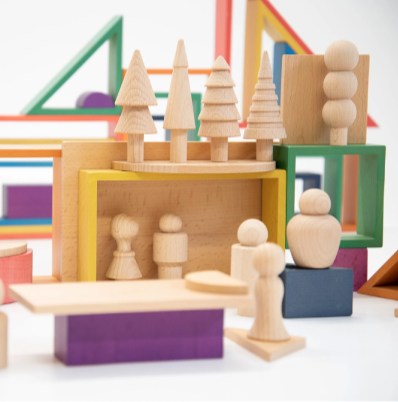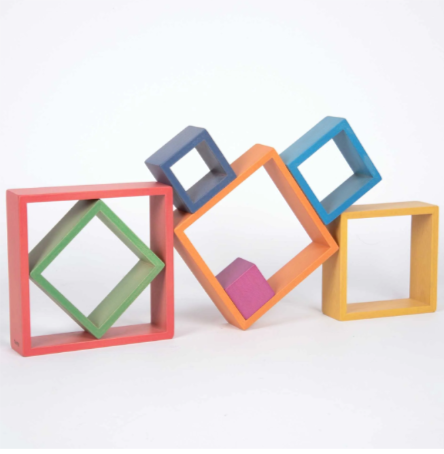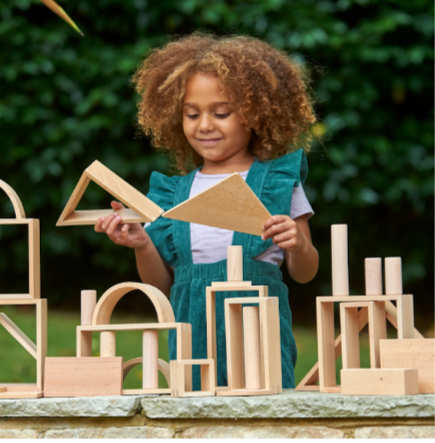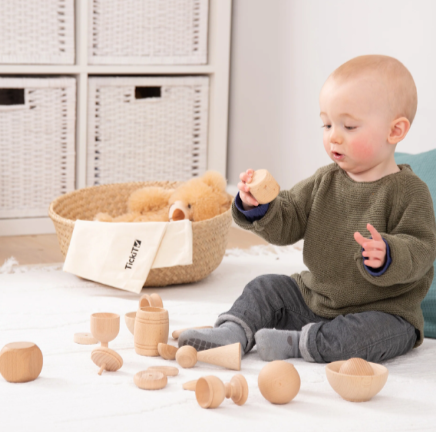Children are inherently imaginative and eager to engage and explore their surroundings. You, as the adults in their lives, should promote children’s independence and the desire to learn via play by exposing them to unstructured materials or loose parts that are present in the real world. The loose pieces philosophy places a strong emphasis on the value of including elements that children can fiddle with, disassemble, and move around. These resources and the unstructured play they promote are essential for students’ preparedness for school and success in STEM fields.
Science, Technology, Engineering, and Mathematics (STEM) has gotten a lot of attention recently. STEM helps young children develop the skills they need for the twenty-first century. This study aims to introduce pre-service teachers to the concept of using loose parts in early childhood learning and to explore their opinions on how to use these parts to support STEM. In this article, we will examine the impact of using loose parts on your child’s learning.
How Loose-Parts Play Toys Promote STEM Learning
Theoretically, loose-parts play is one thing, but how does it function in a classroom setting? To boost learning and make it enjoyable, we employ loose components in our study in a variety of essential learning areas!
Maths
Children may be encouraged to gather and count loose bits or to arrange them in patterns when studying maths. Early maths skills include grouping objects according to their colours, sizes, or forms, as well as matching like objects.
Science
Experiments using ad hoc pieces can be a lot of fun. Which objects in water float or sink? What happens if you attempt to stack two blocks, one big on top of the other? What shadows are cast by various loose parts? What materials are used to make various loose components and what characteristics do such materials have?
Language and Literacy
Children develop their language skills when they begin to explain the loose components they have in front of them or what they have made with those parts. Combining early storytelling experiences with the improvement of reading skills can be valuable.
Loose Parts Focused Strategies and Approaches
Loose-parts play can get as intricate as you like. Start with the basics and work your way up. You don’t need to have the largest collection of materials to make it work. Here are a few points to consider.
Organising for Loose-Parts Play
Simplicity is key, when it comes to loose-parts organisation. You can keep your loose components in buckets or other compact containers that can serve both purposes. You have the option of categorising the loose component resources or just keeping them all in one box. Whatever works for your life and your house is appropriate.
Loose Parts and Open-Ended Learning
Both open-ended learning and loose-parts play are related ideas that enable children to learn about the world while enjoying themselves.
Children are encouraged to study without restrictions or guidelines through open-ended learning. There is no right or incorrect response or method of operation. Playing with loose components is quite similar. When given an identical assortment of loose components, two children might come up with two entirely distinct creations. Either option is valid. Both parties can personalise the educational opportunities.
Loose-Parts Toys Examples
Loose-parts toys can be blended with other materials or used independently. Materials that are regarded as loose components do not have a set of precise instructions. Let’s consider some examples of loose-parts toys that you can purchase from TickiT:
Wooden Community Figures

This set is ideal for helping your kids practise counting, sorting, and pattern-making while engaging in imaginative play. For more diversity and excitement, it’s great to combine with any of our natural wooden playsets. This will encourage your kid to learn about and explore their surroundings.
Rainbow Architect Squares

The nesting set stimulates and develops mathematical logic as children design and build buildings or houses for miniature world play characters or animals while sorting the pieces by size or colour.
Natural Architect Panel Set

This set of 4 different shaped panels (square, triangle, arch and rectangle) encourages imaginative play and can be used to group or sort shapes or as the basis for constructions in small-world play.
Heuristic Play Basic Set

These straightforward and intriguing things will pique your child’s curiosity and inspire them to investigate how they might be incorporated into creative play and education about their surroundings. Simply said, they inspire your child to explore and learn on their own using a hands-on approach.
Conclusion
Children learn best in a laboratory-style setting where they can explore, have fun, and discover things on their own. By enabling children to use their imagination and explore freely with new ideas, loose parts play aids in the development of children’s creative and critical thinking abilities.
